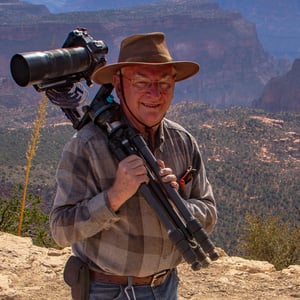You've found
the highest resolution
photographs ever created.
New Releases
VAST photos are the highest resolution photographs ever made. Learn more. Scroll down to explore the latest ultra-high-resolution photos our artists have created. For special early access to VAST photos and an instant 10% discount, click to join our newsletter.
Follow us for the latest beautiful VAST photos:
Jerred Zegelis
Cows in Golden Field
On the sweeping prairies of the midwest, I found myself surrounded by rolling fields that seemed to stretch into forever. The sky was wide open, filled with drifting clouds, and the light turned the grasses into waves of gold. It is a portrait of stillness, strength, and the timeless rhythm of the land.
What struck me most was the balance of vastness and intimacy. At first glance, the horizon feels endless, a reminder of how open and untamed the South Dakota prairies truly are. Yet within that grandeur, the quiet shapes of cattle dotting the fields remind us of life unfolding in its simplest, most enduring form. It’s the kind of moment that speaks about scale and the enormity of the natural world with the humble creatures that live within it.
I’ve always believed in the healing power of nature. Growing up in the Great Plains, I learned that landscapes like this carry stories of heritage, endurance, and belonging. This photograph is my way of sharing that vision with others, of showing the quiet strength and beauty that can so easily be overlooked in the American heartland.
The prairies don’t shout for attention like mountains or oceans. They whisper. Their story unfolds slowly—the way the light shifts across the grass, how the breeze bends the fields, how the horizon glimmers in the distance. I try to honor that subtle beauty by being patient, by paying attention, and by letting the land tell its own story through my lens.
This photograph is also extremely high-resolution, captured with care so that every blade of grass, every shadow of a cloud, and every detail of the prairie can be seen with incredible clarity. The process wasn’t easy. It required careful composition and technical precision, but it was worth every effort. When you stand in front of the final print, you can see the landscape as if you were standing right there with me, breathing in the open South Dakota air.
For me, this photograph isn’t just wall art, it’s a piece of the prairie itself. When you bring it into your home, office, or healthcare space, you bring with it warmth, openness, and serenity. My hope is that this image will give you the same sense of calm and grounding that I felt while creating it.
The vibrant sky, the golden fields, the quiet movement of cattle is the heart of the Midwest. It’s a reminder of wide-open spaces, resilience, and the beauty of slowing down to truly see.
Scott Dimond
Tranquil Morning at Pyramid Lake
On a quiet August morning, Scott stood at the edge of Pyramid Lake, the air crisp with the first hints of dawn. Just over a year had passed since the catastrophic wildfire of July 2024 had swept through Jasper National Park, leaving devastation in its wake. The flames had come dangerously close to the lake's shores, but miraculously, Pyramid Lake had been spared. The land and town around it had been scorched, with the nearby forests now standing in haunting, blackened silence. Yet, in contrast, the lake remained a picture of tranquility. Its surface, smooth as glass, reflected the surrounding peaks, their jagged outlines softened by the early light. Scott had returned to this place, not only as a photographer but as a witness to nature's resilience—a landscape both ravaged and spared.
With the rising sun beginning to warm the cool air, Scott set up his camera and special equipment, determined to capture every inch of the stillness around him in an extraordinary ultrahigh-resolution photograph. The ambitious project would allow him to immortalize the smallest details—the delicate ripples on the water, the faint color gradients in the sky, and the fine textures of the surrounding terrain. He had spent years perfecting his craft, and today he felt more prepared than ever to document this rare moment of peace.
As the morning unfolded, Scott worked methodically, taking shot after shot, each one a small piece of the larger puzzle. It was a slow and deliberate process, but Scott was patient. He understood that this image would be more than just a photograph; it would be a tribute to survival, to the fact that while the flames had ravaged much of the land, the lake itself had remained untouched, a symbol of perseverance in the face of destruction. By the time he had taken the final shot, the sun had fully risen, its golden light now flooding the scene. Scott stood back, taking a deep breath, knowing that this ultrahigh-resolution photograph would forever preserve a moment when beauty and resilience converged at Pyramid Lake.
Scott Dimond
Tranquil Morning at Pyramid Lake: Cropped
On a quiet August morning, Scott stood at the edge of Pyramid Lake, the air crisp with the first hints of dawn. Just over a year had passed since the catastrophic wildfire of July 2024 had swept through Jasper National Park, leaving devastation in its wake. The flames had come dangerously close to the lake's shores, but miraculously, Pyramid Lake had been spared. The land and town around it had been scorched, with the nearby forests now standing in haunting, blackened silence. Yet, in contrast, the lake remained a picture of tranquility. Its surface, smooth as glass, reflected the surrounding peaks, their jagged outlines softened by the early light. Scott had returned to this place, not only as a photographer but as a witness to nature's resilience—a landscape both ravaged and spared.
With the rising sun beginning to warm the cool air, Scott set up his camera and special equipment, determined to capture every inch of the stillness around him in an extraordinary ultrahigh-resolution photograph. The ambitious project would allow him to immortalize the smallest details—the delicate ripples on the water, the faint color gradients in the sky, and the fine textures of the surrounding terrain. He had spent years perfecting his craft, and today he felt more prepared than ever to document this rare moment of peace.
As the morning unfolded, Scott worked methodically, taking shot after shot, each one a small piece of the larger puzzle. It was a slow and deliberate process, but Scott was patient. He understood that this image would be more than just a photograph; it would be a tribute to survival, to the fact that while the flames had ravaged much of the land, the lake itself had remained untouched, a symbol of perseverance in the face of destruction. By the time he had taken the final shot, the sun had fully risen, its golden light now flooding the scene. Scott stood back, taking a deep breath, knowing that this ultrahigh-resolution photograph would forever preserve a moment when beauty and resilience converged at Pyramid Lake.
Duilio Fiorille
Vallon d'Ambin from aerial drone view
This is my very first high-resolution drone photo for VAST.
Let's start with the location: we're in the stunning Vallone d'Ambin, just past the stunning mountain amphitheater of Lake Mont Cenis, on the border between Italy and France (Northwestern Alps).
Taking the Vallone di Savalain leads to the Perrin Lakes and this wonderful view of the Vallone d'Ambin and the other valleys, all surrounded by imposing peaks.
The photo was taken using a DJI AIR 3S drone, utilizing the second 70mm lens and the unique free-form panorama feature for this drone. I managed to achieve a final resolution of over 1 GB pixel, starting from individual photographs with a resolution of 50 megapixels each. Despite the wind, the drone remained perfectly level throughout the hundreds of shots, providing sharp and detailed images.
I'm already working on a new photo using this technique.
Aaron Priest
Panorama of Mount Washington – Crown of the Presidential Range: Cropped
Stretching across the horizon in majestic splendor, this panoramic view captures the rugged beauty of Mount Washington, the highest peak in the Northeastern United States. The mountain is the centerpiece of the Presidential Range, named for U.S. presidents and statesmen. The surrounding peaks—Jefferson, Clay, Monroe, Franklin, and Eisenhower—form a natural monument to both geological time and national history.
The summit hosts the Mount Washington Observatory, a nonprofit research station that studies meteorology and climate. The mountain’s unique conditions make it a valuable site for scientific research and education. Known for having some of the most extreme weather on Earth, Mount Washington once held the world record for the highest wind speed ever recorded at the surface—231 mph, measured on April 12, 1934, by the observatory. It still holds the record for highest measured wind speed not associated with a tornado or tropical cyclone. This fierce climate has earned it the nickname “Home of the World’s Worst Weather.”
In 1861, the Mount Washington Cog Railway was completed—the first mountain-climbing cog railway in the world. It operates today, offering visitors a dramatic ride to the summit. During the winter, the cog railway runs half-way up the mountain to Waumbek Station and one of the trains is visible in this panorama. Also opened in 1861, the Auto Road is one of the oldest man-made tourist attractions in the U.S., allowing travelers to drive to the top and experience the panoramic views firsthand.
Throughout most of the winter the mountain range is shrouded in mist and clouds. If the sky is clear, it is typically due to a strong wind. This made capturing a VAST image of Mount Washington challenging and took a few months of planning and waiting for the right weather conditions to get a white, snowy foreground contrasted with a clear, blue sky combined with calm enough wind for trees to be relatively still. In mid-March I had a week that looked promising and spent a few days photographing the mountain range. About 3,000 photos were taken to create this final stitched and focus-stacked image.
Aaron Priest
Panorama of Mount Washington – Crown of the Presidential Range
Stretching across the horizon in majestic splendor, this panoramic view captures the rugged beauty of Mount Washington, the highest peak in the Northeastern United States. The mountain is the centerpiece of the Presidential Range, named for U.S. presidents and statesmen. The surrounding peaks—Jefferson, Clay, Monroe, Franklin, and Eisenhower—form a natural monument to both geological time and national history.
The summit hosts the Mount Washington Observatory, a nonprofit research station that studies meteorology and climate. The mountain’s unique conditions make it a valuable site for scientific research and education. Known for having some of the most extreme weather on Earth, Mount Washington once held the world record for the highest wind speed ever recorded at the surface—231 mph, measured on April 12, 1934, by the observatory. It still holds the record for highest measured wind speed not associated with a tornado or tropical cyclone. This fierce climate has earned it the nickname “Home of the World’s Worst Weather.”
In 1861, the Mount Washington Cog Railway was completed—the first mountain-climbing cog railway in the world. It operates today, offering visitors a dramatic ride to the summit. During the winter, the cog railway runs half-way up the mountain to Waumbek Station and one of the trains is visible in this panorama. Also opened in 1861, the Auto Road is one of the oldest man-made tourist attractions in the U.S., allowing travelers to drive to the top and experience the panoramic views firsthand.
Throughout most of the winter the mountain range is shrouded in mist and clouds. If the sky is clear, it is typically due to a strong wind. This made capturing a VAST image of Mount Washington challenging and took a few months of planning and waiting for the right weather conditions to get a white, snowy foreground contrasted with a clear, blue sky combined with calm enough wind for trees to be relatively still. In mid-March I had a week that looked promising and spent a few days photographing the mountain range. About 3,000 photos were taken to create this final stitched and focus-stacked image.
John Freeman
Sunset on the Canyon
This sunset shot was done at Point Sublime on the North Rim of the Grand Canyon. Extremely isolated, only a relatively few people get to experience Point Sublime, largely due to the rugged and narrow 17 mile (27.3 km) 4X4 road that needs to be traversed to reach this epic viewpoint.
As a kid growing up in Wyoming, I used to love to go out in the prairie around sunset and watch and listen as God wound down the day. The wind would usually stop, and the sounds of the prairie would turn to silence. The Nighthawks would do their silent flights dodging and turning in the near darkness gathering their nightly dinner of insects. Crickets would begin to chirp as the cool of the evening settled in after the daytime heat.
The evening I shoot this photo on the North Rim of the Grand Canyon reminded me of those evenings on the prairies of Wyoming. Bats silently flew around out heads and we would hear the cry of a hawk or eagle in the distance. A very subtle warm breeze rose up and over the canyon rim making for a comfortable evening. But otherwise silence… silence so hushed that you can almost hear that “Still small voice of God”.
Scott Dimond
Sundown at Deadvlei
Scott’s journey to Namibia had been years in the making, fueled by a passion for capturing the world’s most striking landscapes in jaw-dropping detail. With his ultra-high-resolution camera equipment in tow, he made his way across the vast desert terrain toward Deadvlei, a place that had long been on his photographic bucket list. As he stood at the edge of the white clay pan, the late afternoon sun painted the dunes in hues of gold and orange, casting long shadows on the bleached earth below. The ancient, blackened trees—twisted and skeletal—reached toward the sky in a defiant embrace of time, creating a stark contrast against the surreal landscape. Scott could feel the weight of the silence here, the kind that swallowed all sound and made the desert feel like a sacred space frozen in time.
With every click of the shutter, Scott marveled at the precision required to capture the immense beauty around him. His camera and special panoramic gear allowed him to weave together the landscape in ultra-high resolution, each shot meticulously planned to capture just a small segment of the scene with all the shots to be later reassembled to show the vastness of Deadvlei’s unique terrain. The smooth, wind-carved curves of the dunes stretched endlessly into the horizon, their imposing forms flanked by the gnarled silhouettes of dead trees, remnants of an ancient, dried-up riverbed. The challenge was more than just technical; it was about finding harmony in the contrast between the harsh desert light and the intricate textures of the earth, trees, and sky. Scott felt deeply connected to the place as he worked, as if he were not just photographing it, but breathing it in.
By the time Scott had completed his panoramic shots, the sun had set lower in the sky, and the landscape had shifted once again, growing darker by the minute. Packing up his gear, he took one last look at Deadvlei, knowing that the images he had captured would do more than simply document the scene—they would preserve the raw, timeless beauty of this extraordinary place. The desert, with its impossible stillness, had given him more than just photographs. It had gifted him a connection to something ancient and unyielding, a place where nature’s resilience and quiet power stood in sharp contrast to the harshness of its surroundings. With a sense of fulfillment, Scott made his way back, already looking forward to the images that would forever carry the spirit of Deadvlei.
Scott Dimond
Deadvlei
Scott’s journey to Namibia had been years in the making, fueled by a passion for capturing the world’s most striking landscapes in jaw-dropping detail. With his ultra-high-resolution camera equipment in tow, he made his way across the vast desert terrain toward Deadvlei, a place that had long been on his photographic bucket list. As he stood at the edge of the white clay pan, the late afternoon sun painted the dunes in hues of gold and orange, casting long shadows on the bleached earth below. The ancient, blackened trees—twisted and skeletal—reached toward the sky in a defiant embrace of time, creating a stark contrast against the surreal landscape. Scott could feel the weight of the silence here, the kind that swallowed all sound and made the desert feel like a sacred space frozen in time.
With every click of the shutter, Scott marveled at the precision required to capture the immense beauty around him. His camera and special panoramic gear allowed him to weave together the landscape in ultra-high resolution, each shot meticulously planned to capture just a small segment of the scene with all the shots to be later reassembled to show the vastness of Deadvlei’s unique terrain. The smooth, wind-carved curves of the dunes stretched endlessly into the horizon, their imposing forms flanked by the gnarled silhouettes of dead trees, remnants of an ancient, dried-up riverbed. The challenge was more than just technical; it was about finding harmony in the contrast between the harsh desert light and the intricate textures of the earth, trees, and sky. Scott felt deeply connected to the place as he worked, as if he were not just photographing it, but breathing it in.
By the time Scott had completed his panoramic shots, the sun had set lower in the sky, and the landscape had shifted once again, growing darker by the minute. Packing up his gear, he took one last look at Deadvlei, knowing that the images he had captured would do more than simply document the scene—they would preserve the raw, timeless beauty of this extraordinary place. The desert, with its impossible stillness, had given him more than just photographs. It had gifted him a connection to something ancient and unyielding, a place where nature’s resilience and quiet power stood in sharp contrast to the harshness of its surroundings. With a sense of fulfillment, Scott made his way back, already looking forward to the images that would forever carry the spirit of Deadvlei.
Scott Dimond
Mountain Sunflowers
Each spring, the slopes of the East Kootenays are carpeted with a stunning display of flowering sunflowers. The East Kootenays region is located in south-eastern British Columbia, Canada, which includes the valleys of the Columbia and Kootenay Rivers south of Golden to the USA border. These valleys are bordered to the east by the Rocky Mountains and to the west by the Purcell Mountains. The sunflowers are the Arrowleaf Balsamroot, which has a wide range across western North America. They can be found from Arizona north to B.C.’s Cariboo region and California east to Colorado, and also in the Black Hills of South Dakota.
The stunning vistas can be short-lived as just a few days of unseasonably warm weather are enough to wilt the flowers. On the other hand, the plant is unique in that it has a long taproot that allows it to survive low-intensity fires, which can be common in grasslands. After such events, the plant can be seen rapidly sprouting from the charred surface of otherwise undamaged soil as the vast majority of balsamroot is underground.
I often visit the area between the towns of Cranbrook and Kimberley in the East Kootenays and have seen large open fields blanketed with these sunflowers. But I have always been on the lookout for a large quantity of blooming flowers within an open ponderosa pine forest. That search was rewarded this past spring when I discovered this wonderful slope within a wooded area that was completely covered with blooming sunflowers.
Jeff Lewis
Fountain of Life
Some places have become classic for good reason. Mossbrae Falls is an incredible wonder of nature, certainly one of the most beautiful waterfalls in California. I hiked here early in the morning and was elated to have the place to myself for an hour. I spotted some interesting mushrooms, sat by the water, and made two VAST photos to capture the serenity and bring it to you. Here is one of them!
Jeff Lewis
Crystal Spring
Some places have become classic for good reason. Mossbrae Falls is an incredible wonder of nature, certainly one of the most beautiful waterfalls in California. I hiked here early in the morning and was elated to have the place to myself for an hour. I spotted some interesting mushrooms, sat by the water, and made two VAST photos to capture the serenity and bring it to you. Here is one of them!
Scott Dimond
Twilight at Deadvlei
Scott’s journey to Namibia had been years in the making, fueled by a passion for capturing the world’s most striking landscapes in jaw-dropping detail. With his ultra-high-resolution camera equipment in tow, he made his way across the vast desert terrain toward Deadvlei, a place that had long been on his photographic bucket list. As he stood at the edge of the white clay pan, the late afternoon sun painted the dunes in hues of gold and orange, casting long shadows on the bleached earth below. The ancient, blackened trees—twisted and skeletal—reached toward the sky in a defiant embrace of time, creating a stark contrast against the surreal landscape. Scott could feel the weight of the silence here, the kind that swallowed all sound and made the desert feel like a sacred space frozen in time.
With every click of the shutter, Scott marveled at the precision required to capture the immense beauty around him. His camera and special panoramic gear allowed him to weave together the landscape in ultra-high resolution, each shot meticulously planned to capture just a small segment of the scene with all the shots to be later reassembled to show the vastness of Deadvlei’s unique terrain. The smooth, wind-carved curves of the dunes stretched endlessly into the horizon, their imposing forms flanked by the gnarled silhouettes of dead trees, remnants of an ancient, dried-up riverbed. The challenge was more than just technical; it was about finding harmony in the contrast between the harsh desert light and the intricate textures of the earth, trees, and sky. Scott felt deeply connected to the place as he worked, as if he were not just photographing it, but breathing it in.
By the time Scott had completed his panoramic shots, the sun had set lower in the sky, and the landscape had shifted once again, growing darker by the minute. Packing up his gear, he took one last look at Deadvlei, knowing that the images he had captured would do more than simply document the scene—they would preserve the raw, timeless beauty of this extraordinary place. The desert, with its impossible stillness, had given him more than just photographs. It had gifted him a connection to something ancient and unyielding, a place where nature’s resilience and quiet power stood in sharp contrast to the harshness of its surroundings. With a sense of fulfillment, Scott made his way back, already looking forward to the images that would forever carry the spirit of Deadvlei.
Jerred Zegelis
Prairie Dreams
Out on the open prairie of Kansas, I found myself standing in a field of green that stretched all the way to the horizon. The land rolled gently, and on the ridge stood a few lone trees, standing strong and steady against the sky. The clouds drifted lightly above, adding softness and rhythm to the scene. I wanted this photograph to capture the simplicity and strength of the Kansas prairie with its quiet openness and its enduring beauty.
What I love most about this image is the sense of spaciousness it brings. Kansas is often thought of as flat, but in reality, the prairies roll and shift like waves, creating a landscape that feels alive and full of motion. Those single trees scattered across the horizon give the scene character, a reminder of resilience and individuality in the midst of wide-open space. It’s a landscape that asks you to slow down, breathe deeply, and notice the beauty that reveals itself only with patience.
For me, Kansas carries the same kind of quiet power as Nebraska and the rest of the Great Plains. It’s a place where the land is vast, but not empty and where life thrives in subtle ways. This photograph is my way of honoring that spirit, of sharing the calm and inspiration I felt while standing there, surrounded by nothing but grass, sky, and the quiet presence of the prairie.
This is an extremely high-resolution photograph, made to capture every detail of the grass, the gentle contours of the hills, and the fine textures of the sky. I spent time waiting for the light to soften, so the greens of the prairie would glow with warmth and life. The final image carries a clarity that allows you to step into the Kansas prairie yourself, to feel its openness and its peace.
This photo is about the freedom and grounding that open landscapes provide. When displayed in a home, office, or healthcare space, it creates a sense of calm and renewal, offering a reminder of balance and perspective.
The rolling prairie, the scattered trees, the vast Kansas sky... this is the Great Plains at its most beautiful and peaceful.
Jerred Zegelis
Rolling Hills of the Midwest
Out in the Nebraska Sandhills, I found myself surrounded by nothing but rolling hills, grass stretching in every direction, and a sky filled with endless clouds drifting in soft patterns. This is one of those places where silence is key. The land itself feels alive, breathing beneath the big Nebraska sky. I wanted to create a photograph that held that feeling of openness, of freedom, of being small in a place that is vast and timeless.
What I love most about this image is the pure simplicity of it. There are no distractions, no noise: just grass, hills, sky, and light. And yet, it’s anything but plain. The Sandhills have a way of surprising you with their quiet beauty. The hills rise and fall like waves frozen in time, while the clouds above echo that rhythm, creating a harmony between land and sky. This is Nebraska at its truest with subtle, powerful, and deeply grounding.
I grew up connected to this land, and the Sandhills in particular feel sacred to me. They remind me that beauty doesn’t have to be loud or dramatic. It can be soft, steady, and enduring. This photograph is my way of sharing that connection, so others can feel the peace and perspective these rolling hills bring.
This is an extremely high-resolution photograph, captured carefully so that every blade of grass, every curve of the hills, and every texture in the sky can be seen with incredible clarity. I waited for the light to fall just right, so the greens glowed against the soft blue, and the clouds carried depth and movement across the horizon. When printed large, this image invites you into the Sandhills themselves so you can almost feel the wind moving through the grasses.

















